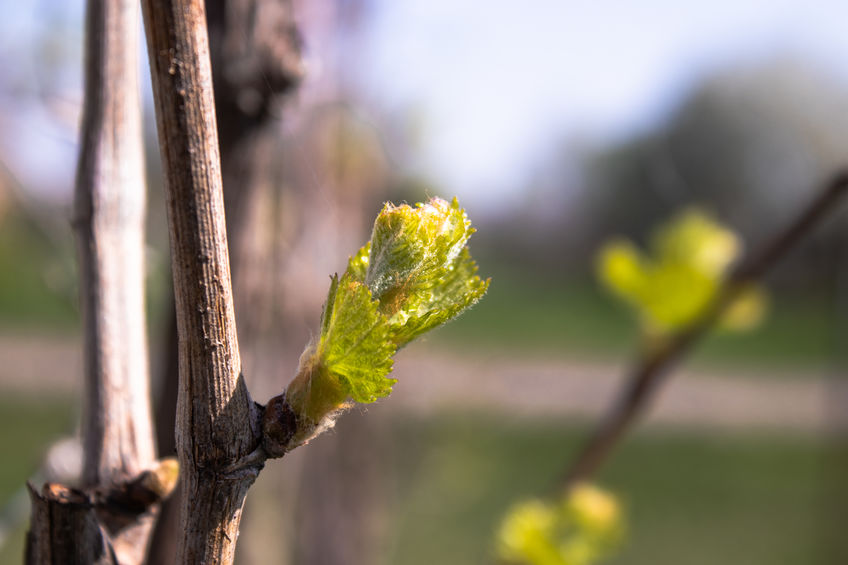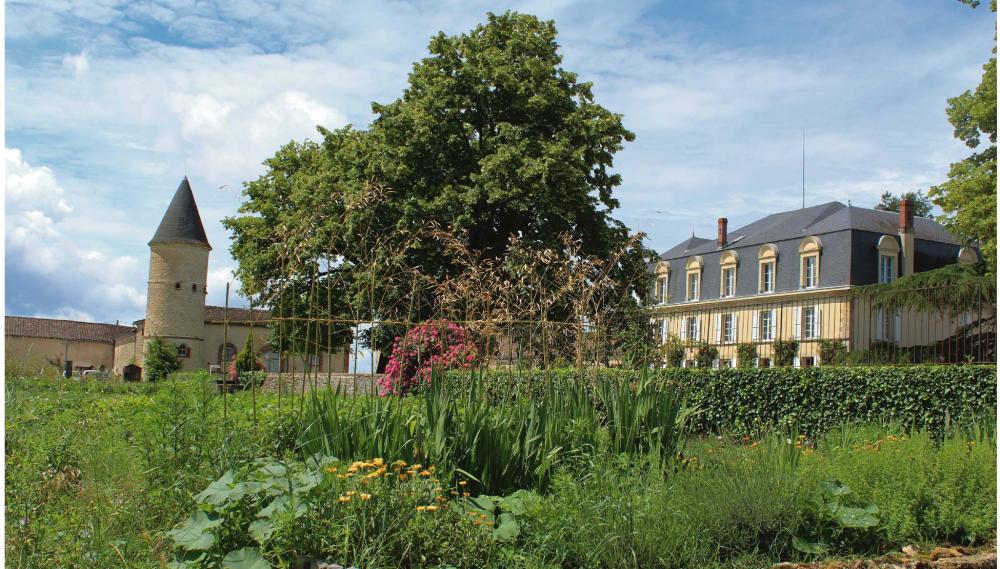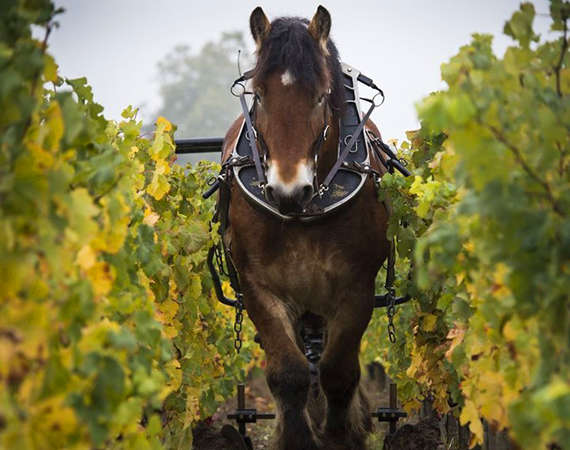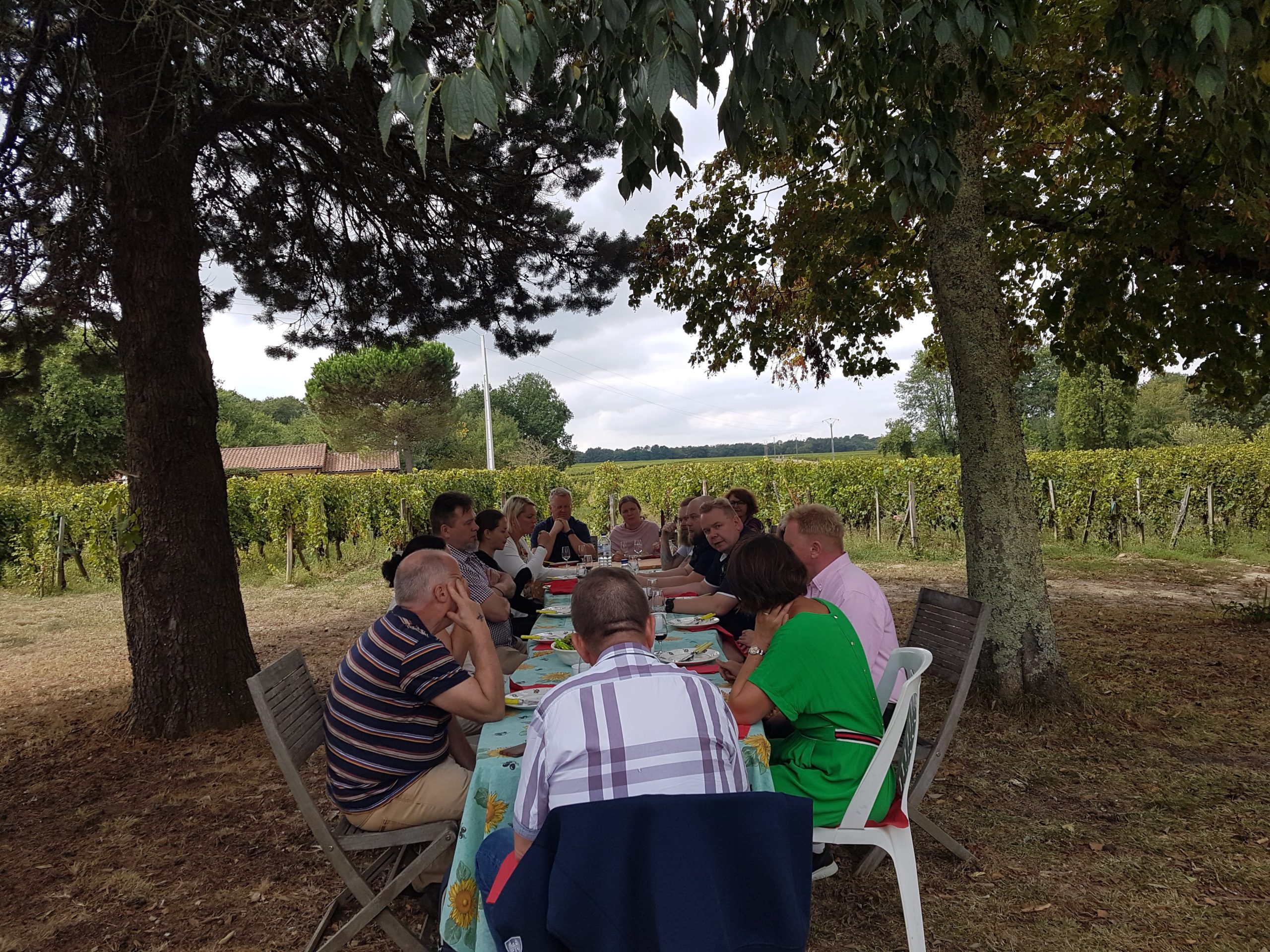How green are our grapes?
When visiting our region many of our clients ask to visit the most famous châteaux next to the golf courses they play. As we now begin to see the end of the Covid-19 pandemic, our awareness for preserving nature is stronger than ever before.
Previously we looked at “how green are our golf courses”, we now take a look at how green are the grapes grown locally. We are no experts, but we wanted to share with you what our beautiful region strives to do towards preserving the environment when it comes to wine-making.
A few facts about ‘green grapes’

The first leaves of young grapes bloom in spring.
Organic and bio-dynamic wines are the kindest to the environment and are strictly defined by official regulations. There are often debates if they are nicer to our pallet ; this widely depends on the terroir (soil, climate, know-how), and your personal taste. But for sure, we know that sustainable wines are healthier for us and the environment and that sustainable wineries require dedication and a shift in priorities as the process implies higher costs and lower yields due to the unpredictable factors of mother nature. 2018 for instance was a tough year, with a lot of mildew provoking devastating losses for organic and bio-dynamic estates.
Organic farming does not use chemical fertilizers, pesticides, fungicides, and herbicides. Copper and sulfur are spread in the fields. In France, the AB for ‘Agriculture Biologique’ is the official certification. All products labelled with AB contain at least 95 percent organic components, produced in France or the EU.

Bio-dynamic farming takes many natural surrounding factors to produce the wine. Winemakers eliminate the use of chemicals, pesticides, fungicides, and herbicides like in organic wines. They use a more ethical and all-encompassing approach by considering all the natural aspects of the terroir. They use wild yeasts and homeopathic treatments made of natural ingredients (nettle, yarrow, camomile, oak bark, dandelion and valerian) to make organic compost and heal the vines and the earth. They also follow the biodynamic calendar of the moon and astrology to guide them at every stage of winemaking. After all, this method follows the moon’s effect on plant growth for thousands of years; and we know it controls the tides with direct effect on nature.
Draft horses ploughing the earth and sheep munching on weeds around vines, are very common these days in our region. It demonstrates the local chateaux’s philosophy and commitment to respecting the soil, like our ancestors use to do.
An unstoppable trend
In 2018, according to the CIVB, out of 6,300 estates there were 608 organically certified producers of AOC Bordeaux (a 29% increase in two years) and 47 certified biodynamic. Some of the well-known Crus Classés are organic, biodynamic, or in conversion – many of them recently converted – and include famous names such as, Pape-Clément, Latour, Margaux, Pontet-Canet, Palmer, Angélus in the Haut-Médoc and Saint-Émilion, and Climens, Guiraud, and d’Yquem in Barsac and Sauternes.

The Greens and Grapes bio wine trail
The good news for our clients is that many organic and biodynamic châteaux are open for visits. Châteaux take great pride in showing of their vineyards and cellars as it is an opportunity to explain the process of sustainable winemaking. For instance, at Château Guiraud in Sauternes, visitors are taken around the vegetal gardens allowing them to see the natural reproduction of bio-diversity. Vegetables grown on the grounds are also used by the restaurant’s estate. At Château La Dauphine in Fronsac the green tour takes you round the permaculture vegetable garden, the aquaponics and the beehives. This summer at Château Kirwan in Médoc visitors can test their senses by tasting eatable plants which share the aromas of Kirwan wines (blackcurrant, vanilla, mint, peper and licquorice). At Château Vieux Mougnac, near Saint-Emilion, you’re greeted by the wine-maker and the wine consultant Laetitia, the 5th generation of organic winemakers on this estate. You visit the cellars and finish with a workshop in the middle of the vineyards where you blend your own wine and leave with your own sample bottle.

We can extend this trail to the French Pyrenées region of Irouleguy where you can buy the local produce, like the famous Ossau-Iraty goat cheese and the beautiful tanic Irouleguy wine, directly from the producers.
In the La Rioja region, we have also found a few bodegas who are passionate and dedicated to organic farming. It is just a minority with the certification, but others will follow.
Credits :
Chateau Pape Clement
Chateau Guiraud
